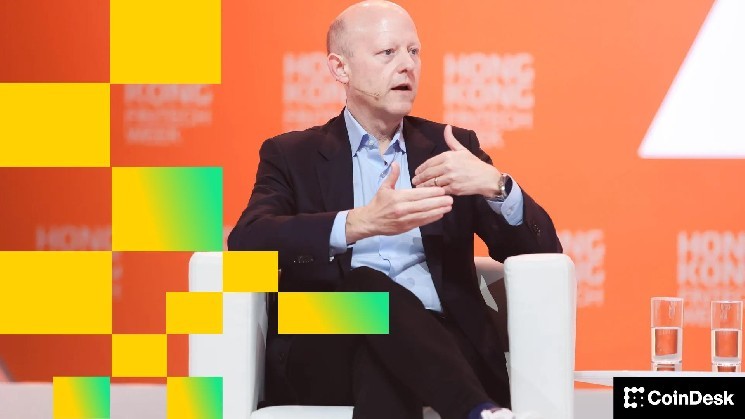Listen to the article
Circle (CRCL), the firm behind the $76 billion stablecoin USDC$0.9998 is inching closer towards launching its payments-focused Arc blockchain, starting a test phase with a wide roster of institutional partners.
The firm said on Tuesday it has deployed Arc’s public testnet version, allowing over 100 financial institutions, asset managers and tech firms already involved, such as Visa, HSBC, BlackRock and Anthropic.
“Combined, these companies reach billions of users, move, exchange, and custody hundreds of trillions in assets and payments, and support local economies across Africa, the Americas, Asia, Europe and the Middle East,” said Circle CEO Jeremy Allaire.
The move comes as stablecoins, a $300 billion class of crypto tokens tied to fiat money, are becoming increasingly embedded into traditional finance. Meanwhile, big banks and asset managers also explore using blockchains for moving instruments like bonds, funds and credit, often called tokenization of real-world assets (RWA), for operational gains.
They set to be huge markets. Citi projected that stablecoins could worth $4 trillion by the end of the decade, while tokenized assets may reach almost $19 trillion market size by 2033, according BCG and Ripple.
Banks, asset managers onboard
Circle said Arc is meant to serve as a base layer for financial services from tokenized funds, cross-border payments to foreign exchange (FX) settlement. It will offer features like U.S. dollar-based fees, sub-second settlement and optional privacy controls, tightly integrated with Circle’s stablecoin and payments platform.
Among the firms exploring Arc are traditional finance heavyweights like State Street, Deutsche Bank, Invesco, and Société Générale. They’re joined by digital asset players including Coinbase and Kraken, fintechs like Nuvei and Brex, and global tech providers like AWS and Mastercard.
For example, Visa is using the testnet to evaluate how stablecoin-backed payment infrastructure could speed up global money movement. BlackRock’s head of digital assets, Robert Mitchnick, said the firm is exploring how Arc’s support for stablecoin settlement and onchain FX could “unlock additional utility” for capital markets.
Invesco is using the testnet to evaluate how blockchain might help tokenized funds operate more efficiently, while Société Générale is focused on programmable settlement and transparency in cross-border capital flows. HSBC, one of the world’s largest global banks, said it’s testing Arc’s potential for faster, more transparent international payments.
State Street is testing digital asset custody integrations. SBI Holdings is evaluating how regulated financial services might be extended into onchain environments. Deutsche Bank, Standard Chartered and First Abu Dhabi Bank are participating as well, signaling growing interest from global banking networks.
The launch has also piqued the interest of asset managers like WisdomTree and infrastructure players such as AWS, Mastercard and Cloudflare. Fintech firms Nuvei and Brex are testing Arc’s ability to support merchant payments and cross-border settlement. Exchanges such as Coinbase, Kraken and Coincheck are participating, alongside DeFi protocols including Aave AAVE$234.72, Curve (CRV) and Maple (SYRUP).
Anthropic, the firm behind the artificial intelligence (AI) assistant Claude, also plans to integrate AI-powered developer tools into Arc.
Stablecoin issuers across multiple regions are also active on the testnet, including Australia’s Forte (AUDF), Brazil’s Avenia (BRLA), Mexico’s Juno (MXNB), and the Philippines’ Coins.ph (PHPC). These regional issuers are evaluating Arc’s stablecoin swap and FX infrastructure.
Circle said its long-term goal is for Arc to evolve into a decentralized, community-governed system. While Circle is leading the initial rollout, the roadmap includes opening validator participation and setting up public governance frameworks to guide the network’s future development.
Read more: Why Circle and Stripe (And Many Others) Are Launching Their Own Blockchains



